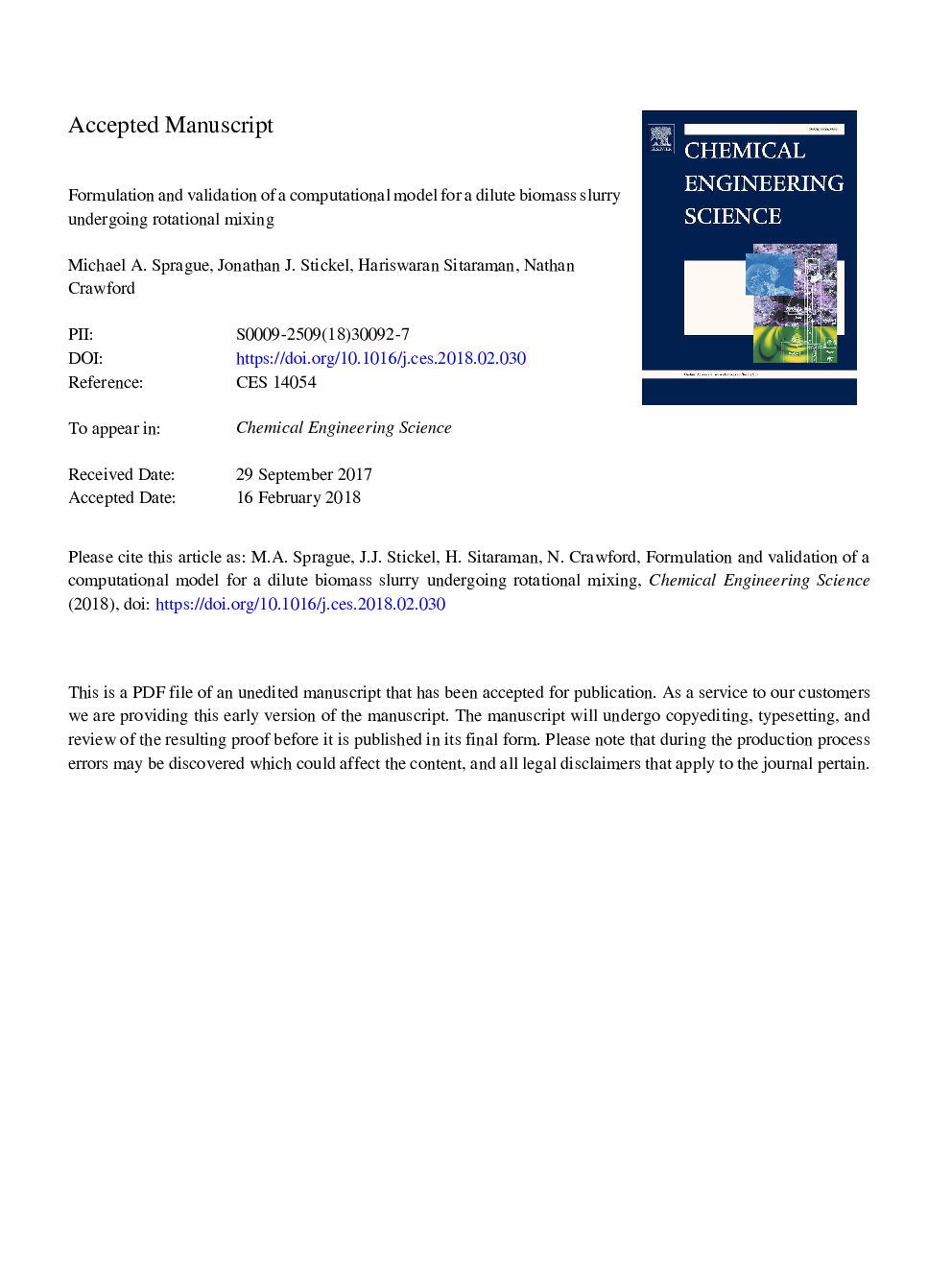| Article ID | Journal | Published Year | Pages | File Type |
|---|---|---|---|---|
| 6588571 | Chemical Engineering Science | 2018 | 39 Pages |
Abstract
In this paper we develop a computational model for the mixing and transport of a dilute biomass slurry. The objective was to create a sufficiently simple and efficient model for biomass transport that can be coupled with reaction models for the study of conversion of cellulosic biomass into fermentable sugars. Our target system is 5%-by-mass α-cellulose, which is our proxy for more complex lignocellulosic biomass. In the authors' previous work, an experimental investigation with α-cellulose under two vane-mixer configurations showed a bifurcation between a settling regime, for which settling effects dominate, and a suspended regime, for which solids are mostly suspended. Here, a mixed-fluid model was chosen, for which the model for the mixture-velocity field is the incompressible Navier-Stokes equations under the Boussinesq approximation for buoyancy. Solids transport includes solids motion due to diffusion, settling, advection, and shear. Comparison of simulated and experimental results show good agreement in the suspended regime, and in capturing the bifurcation rate. While the model captured well the distribution of solids in the settling regime, the model was incapable of capturing the high torque values seen in experiments with vanishing mixer rotation rate.
Related Topics
Physical Sciences and Engineering
Chemical Engineering
Chemical Engineering (General)
Authors
Michael A. Sprague, Jonathan J. Stickel, Hariswaran Sitaraman, Nathan Crawford,
